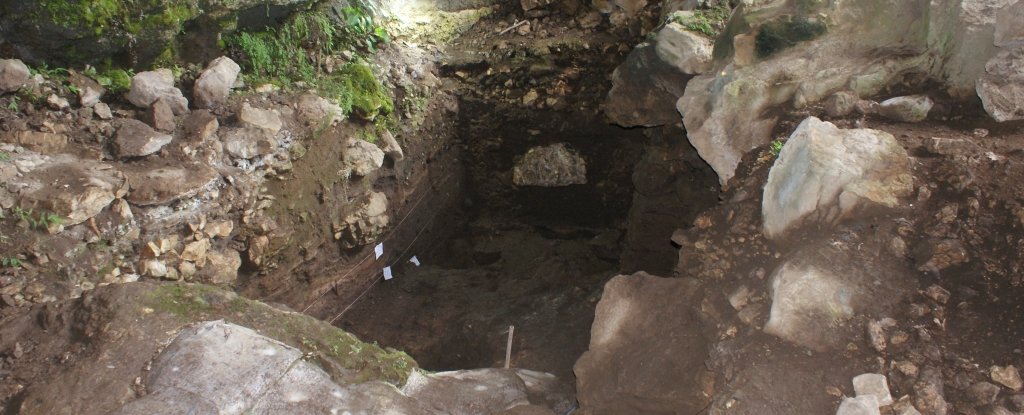Products You May Like
A cup of mud that has been buried beneath the floor of a cave for millennia has just yielded up the genome of an ancient human.
Analysis reveals traces of a woman who lived 25,000 years ago, before the last Ice Age; and, although we don’t know much about her, she represents a significant scientific achievement: the feasibility of identifying ancient human populations even when there are no bones to recover.
The sample also yielded DNA from wolf and bison species, which an international team of scientists were able to place in the context of their population histories.
“Our results,” they wrote in their paper, “provide new insights into the Late Pleistocene genetic histories of these three species and demonstrate that direct shotgun sequencing of sediment DNA, without target enrichment methods, can yield genome-wide data informative of ancestry and phylogenetic relationships.”
The recovery of ancient DNA has typically relied rather a lot on bones, and luck. First, you need the bones to have survived, and survived intact enough to preserve DNA over many thousands of years.
Then you need to be able to find them, and recover enough genetic material for sequencing. It’s painstaking work, but rewarding – ancient DNA is able to fill a lot of gaps in the evolutionary history not just of humans, but other life as well.
A lot of archaeological sites have more evidence of hominid use than bones, however. The cave of Satsurblia in Georgia is one such site. Artifacts such as stone tools survive the rigor of time better than bones, so it’s not surprising. Even so, the cave was used by ancient humans for thousands of years, and yet only a single individual’s genome from the site had ever been sequenced, from a human that lived 15,000 years ago.
Environmental DNA, that can be found preserved in the sediment, is increasingly looking like an excellent way to learn more about the past. It is deposited in feces, as we saw with the recovery of ancient bear DNA earlier this year, or fragments of bone that have been ground to dust.
So a team of scientists led by evolutionary biologist Pere Gelabert and archaeologist Ron Pinhasi of the University of Vienna in Austria went looking for environmental DNA in Satsurblia cave. They obtained six soil samples and carefully sifted through them, looking for traces of genetic material.
They found them in the form of mitochondrial DNA. Fragmentary and incomplete, but, once painstakingly pieced together, sufficient to yield new information about the populations that once inhabited the region.
First, the woman. Only a tiny fraction of her genome was recovered, but from that, the researchers were able to infer that she was a member of a previously unknown group of modern humans. That group is now extinct, but it contributed to present day populations in Europe and Asia, as discovered when the ancient genome was compared to current human genomes.
The wolf genome also represents a previously unknown, now extinct lineage, the researchers said. This suggests that wolf populations changed and reshaped significantly at the end of the last Ice Age, around 11,000 years ago, with lineages such as this one disappearing completely.
Finally, mitochondrial DNA found in the bison genome can also be found in living, present-day bison. The researchers found that its genome was more closely related to European bison and Eurasian bison than North American bison – an important finding, because it suggests the two lineages diverged before the Satsurblia cave bison’s time. According to the team’s analysis, the American bison came first, and diverged into the other populations.
It’s not known whether the three species lived in the cave together – at the moment, it’s very difficult to narrow down the dating with enough certainty. In addition, the study of environmental DNA still has some significant limitations, such as the fragmentary nature of any genetic material retrieved, and the high possibility of contamination.
Nevertheless, the finding demonstrates that, thanks to cheap and accessible technology, digging around in the dirt can be much more revealing than we may have once believed possible.
“Our results demonstrate that unbiased shotgun sequencing of sediment ancient DNA can yield genome-wide data that is informative about the ancestry of several taxa,” the researchers wrote in their paper.
“Genome-wide ancient sediment DNA might open new directions for the study of whole ecosystems, including interactions between different species and aspects of human practices linked to the use of animals or plants.”
The research has been published in Current Biology.
